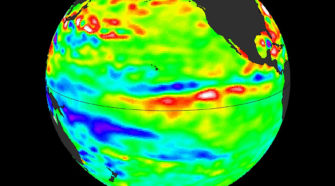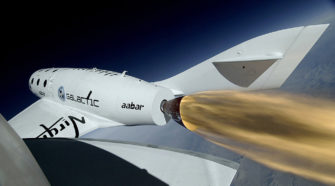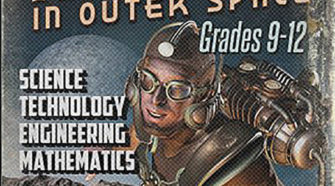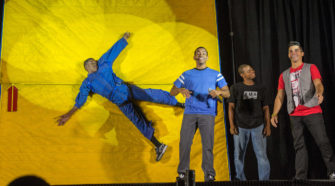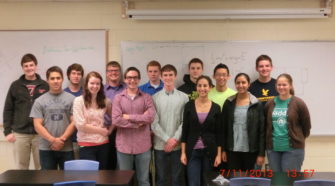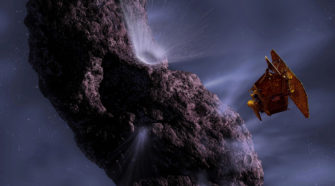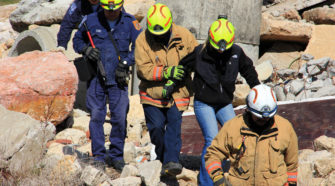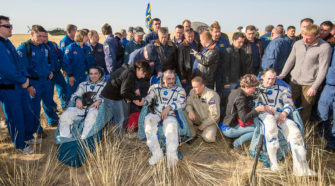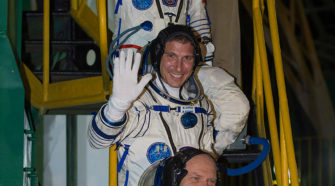Issue #3 (October 2013)
La Nada climate pattern lingers
New remote sensing data from NASA’s Jason-2 satellite show near-normal sea-surface height conditions across the equatorial Pacific Ocean. This neutral, or “La Nada” event, has stubbornly persisted for 16 months, since spring 2012. Models suggest this pattern will continue through the spring of 2014, according to the National Weather Service’s Climate Prediction Center. “Without an …
Can SpaceShipTwo fly up to space?
Vocabulary • Parabola: The graph of a quadratic equation, which for this project is in the shape of an upside-down capital “U” • Quadratic Equation: The equation that creates a parabola when graphed • Vertex: The maximum (or Minimum) point on a parabola Narrative If a baseball is thrown into the air to another ball …
Go where no student has gone before
S.T.E.M. projects for launching student minds into space Imagine yourself a high school student, say, 9th through 12th grade, taking math courses entailing astronautics or aerospace projects. Most projects usually run about six weeks. You are part of a team of three or four other students and collaboration is imperative. Even though you may have …
Students learn about physics from energetic demonstrations
Middle school student Nina-Simone Brown had the chance to experience Newton’s third law of motion in an exciting yet unusual way Monday morning. For those who dozed off in their middle school science class: For every action there is an opposite and equal reaction. And there was plenty of action when FMA Live! Forces in …
NASA chooses Hampton Roads school team for microgravity experiment
Students at the New Horizons Governor’s School for Science and Technology (GSST) in Hampton, Va., will have the chance to design a microgravity experiment that may some day fly on board the International Space Station (ISS). GSST was one of 14 schools across the country picked for the opportunity by the High school students United …
Deep Impact comet hunter mission comes to an end
After almost nine years in space that included an unprecedented July 4th impact and subsequent flyby of a comet, an additional comet flyby, and the return of approximately 500,000 images of celestial objects, NASA’s Deep Impact mission has ended. The project team at NASA’s Jet Propulsion Laboratory in Pasadena, Calif., has reluctantly pronounced the mission …
FINDER keepers: Technology developed for outer space is saving lives on Earth
The Department of Homeland Security and NASA’s Jet Propulsion Laboratory have developed a new radar-based technology dubbed “Finding Individuals for Disaster and Emergency Response” (FINDER), to aid in detecting victims buried in rubble. FINDER is based on the technology NASA’s Deep Space Network uses to monitor the movements and location of its spacecraft millions of miles …
Landing of Expedition 36
Expedition 36 Soyuz landing – The Soyuz TMA-08M spacecraft with Expedition 36 Commander Pavel Vinogradov, Flight Engineer Alexander Misurkin and Flight Engineer Chris Cassidy (sitting far left) landed in a remote area of Kazakhstan on Sept. 11. They returned to Earth after five and a half months serving aboard the International Space Station. This article appeared …
Launch of Expedition 37 to ISS
Expedition 37 launch – The Soyuz TMA-10M rocket launched from the Baikonur Cosmodrome in Kazakhstan on Sept. 26, carrying Soyuz Commander Oleg Kotov, NASA Flight Engineer Michael Hopkins (left, middle) and Russian Flight Engineer Sergei Ryazansky to the ISS. Their Soyuz rocket launched at 2:58 a.m. local time. This article appeared in the 3rd issue of …

